NZXT H700i Mid-Tower Case Review
With dazzling aesthetics, NZXT offers a wide range of cases and cooling solutions. In fact, the company is now manufacturing motherboards, PSUs, and audio solutions as well, with the same dynamicity you would see in their other products. Their cases have always been the first choice for people who prefer to have a clean-looking rig, albeit the latest ones have undoubtedly convinced the users for top-notch cooling performance as well.
PRODUCT INFO NZXT H700i Manufacture NZXT Available at View at Amazon
Moreover, their cooling solutions such as NZXT Kraken X-series AIO coolers are often used in combination with their cases, ministering sophisticated looks.
NZXT H-series cases are out for quite a while now and they are definitely one of the best-looking cases. There are four major variants of these H-series cases; H200, H400, H500, and H700; with newer versions released as H210, H510, and H710 (no refresh for the H400). The ‘i’ in the case name indicates that the case comes with the Hue+ and the Grid+. Hue+ is the RGB control device from the NZXT which can be controlled through the NZXT CAM software while the Grid+ is the fan controller smart device which is also controlled through the CAM software.
The 200-series casings are designed for mini-ITX systems while the 400-series casing can be used with micro-ATX systems. The 500-series and the 700-series casings are designed for ATX systems and provide plenty of space for those who want to design large rigs. We will be reviewing the NZXT H700i Matte Black + Red today; a mid-tower ATX case which comes with Hue+ and Grid+ devices.

Unboxing
The box of the casing is fairly a regular one and is quite easy to open. Upon opening the box, the casing is packed with two huge pieces of thermopole and there is a plastic sheet over the case as well. There are no accessories in the box whatsoever but do not get the wrong idea here. The accessories are placed inside the case.

The box contents are as follow:
- NZXT H700i
- Quick Start Guide
- NZXT Hue+
- NZXT Grid+
- Cable ties, connectors, and various screws
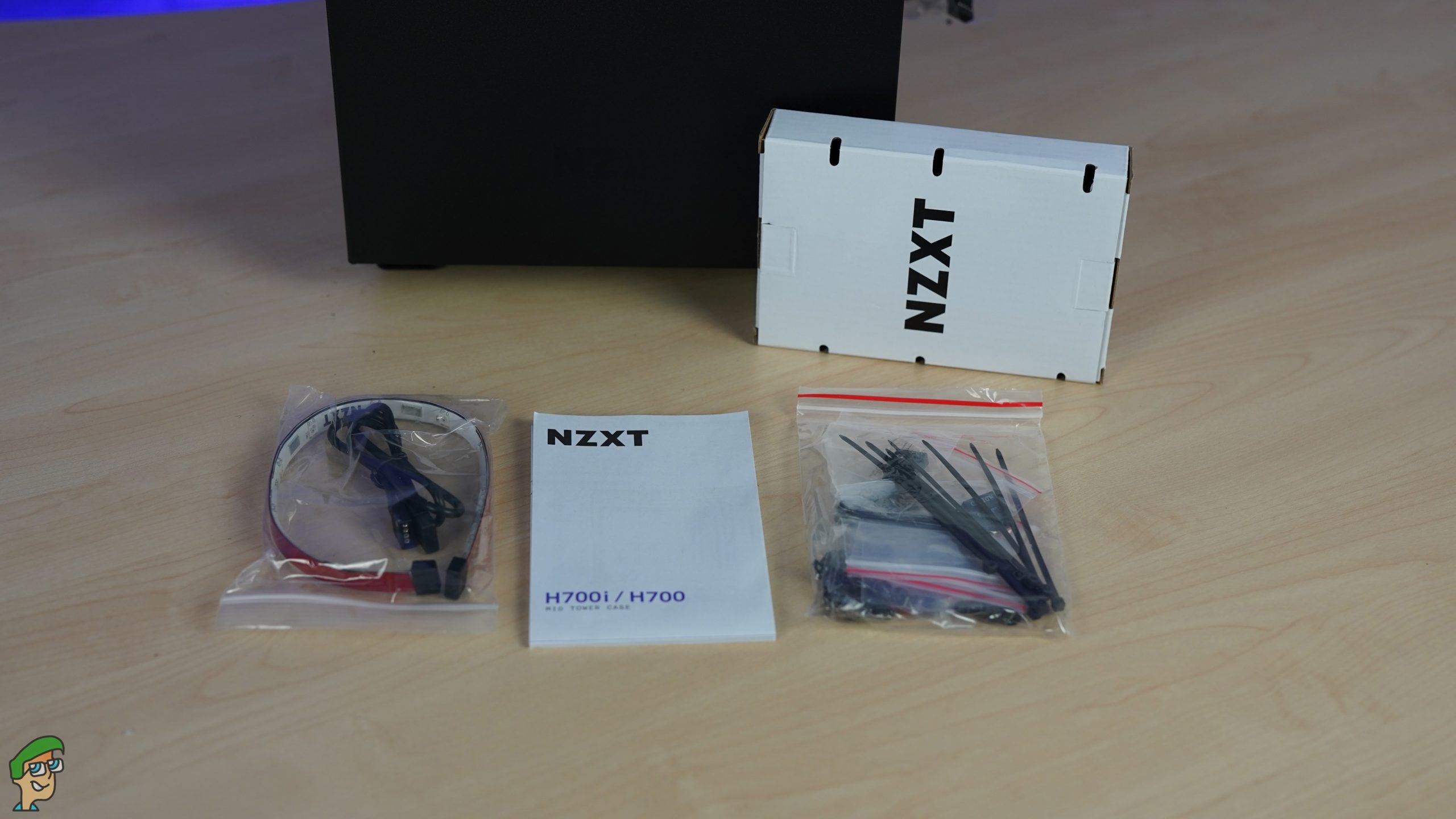
Design & Closer Look
NZXT H700i comes in four different colours; white, black, red, and blue. The white and the red ones are rather popular due to the most mainstream colour theme they provide. The most promising thing of the case is that it comes with a solid front and top while providing a very decent cooling performance. The reason for this is that there are tons of small holes all over the case, whether you talk about the sides or the rear. This is a big improvement from the previous generation cases from NZXT which focused only on the aesthetics. Most of the material of the case is SGCC steel, which is why it is reasonably heavy, at 12.27kg.
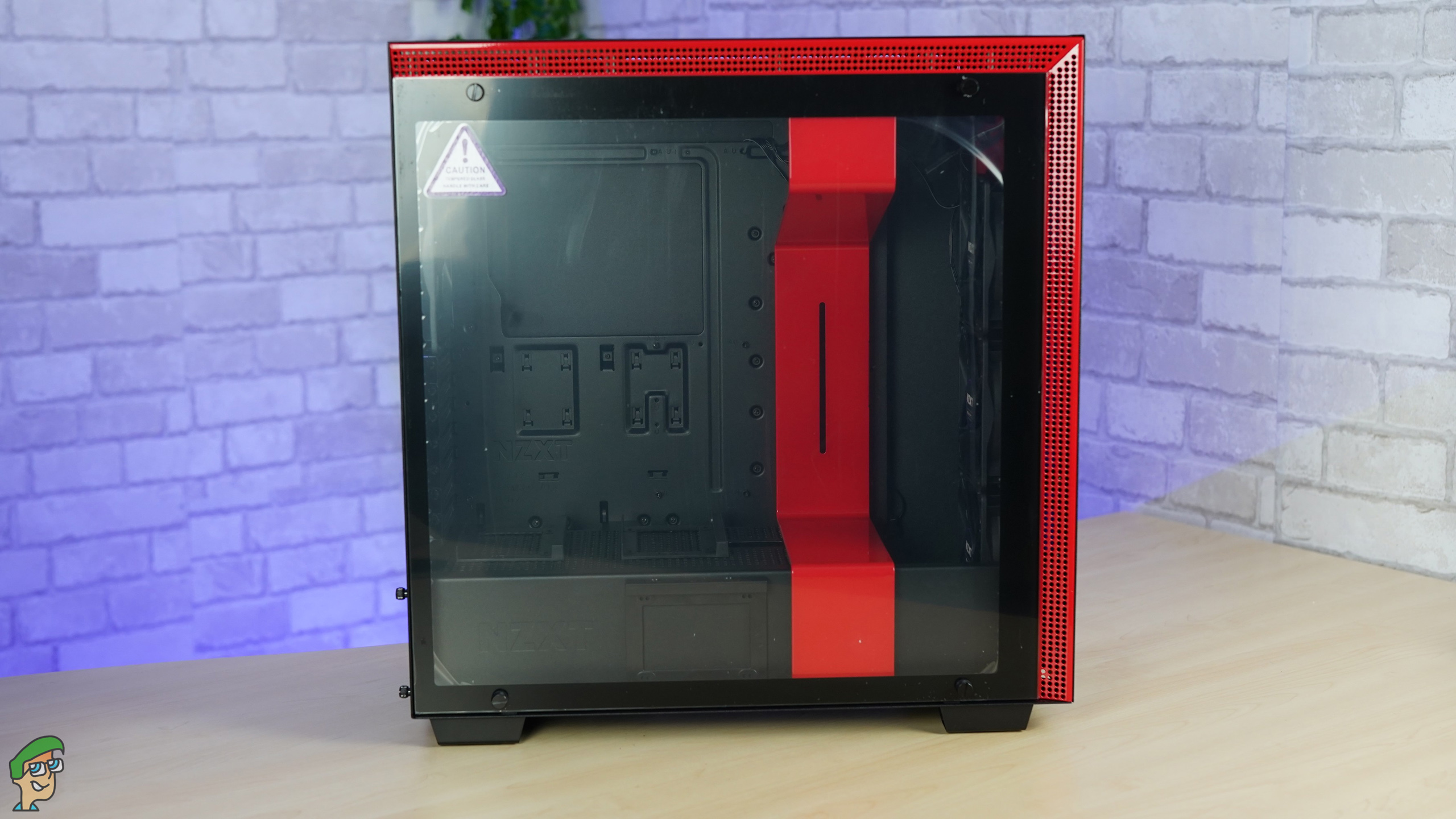
As you can notice, there is a big red bar inside the case, which enhances the cable management and also hides the smart devices. As for the PSU shroud, its design is implemented very nicely and there are a lot of air vents here as well, although they do not seem to make much of a difference (more on that later).
The other side of the case is quite an innovative one and you can just pop-out the metal side-panel by pressing a button. As you can notice, the absence of the mesh at the top is compensated by these holes on the top-side and the front-side. Once you open the back of the case, you can find the accessories which come with the case. The case provides really impressive cable management and has proper channels for them at this side.

As for the aesthetics, we must say, this is one of the most beautiful cases ever designed. The solid front panel looks just beautiful and provides a very unique look, being on the desk. The front panel is not glossy and presents a beautiful grainy texture. One can notice the “NZXT” written at the bottom area of the front panel, whose absence would have made the front rather too simple. The feet of the case can also be seen from the front and are responsible for quite a gap down there.
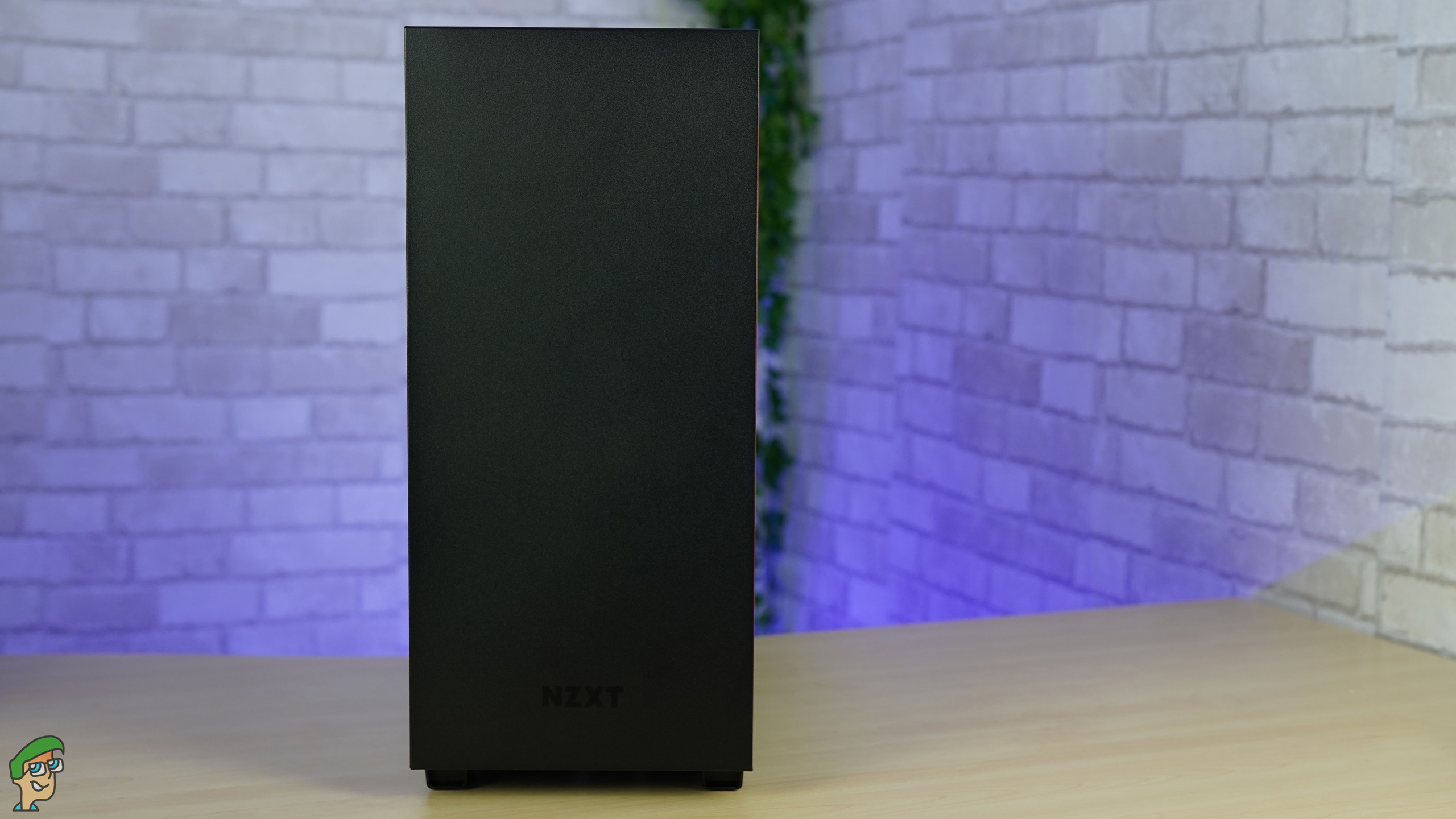
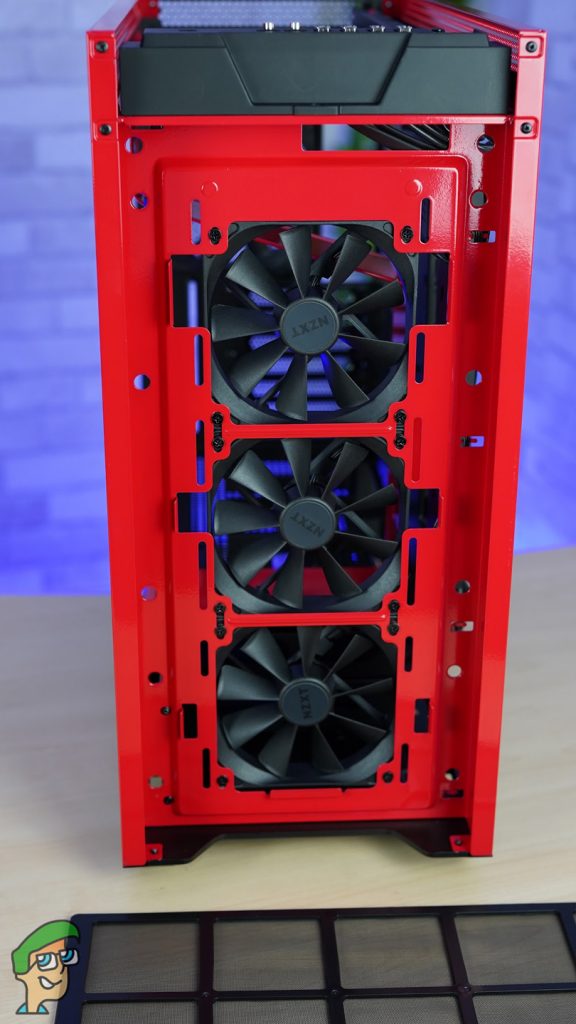
Opening the front panel, one can notice the dust filter which does its job pretty fine. Behind the filter, are located beautiful NZXT fans. What looked like a simple case turns out to be a complex and ferocious one once you open the panels of the case. These are the NZXT AER F120 fans which provide RGB lighting as well, although the lighting can only be seen from the sides. The fans support 1200 +/- 200 RPM fan speeds and provide an airflow of 50.42 CFM, which is a pretty fair specification. They are not the quietest fans but they cannot be called noisy as well and have a noise of 28 dBA.
The rear of the casing is slightly different from the norm as well and it tries to provide as many vents as possible. There are vents located at the top of the rear side, at the fan side, and at the expansion slot positions. As mentioned earlier, among the four pre-installed fans, the rear one is, in fact, a 140 mm one, so as to improve the airflow. The rear fan can be moved up and down as well, providing optimization. This fan has 1000 +/- 200 RPM specification and has a noise rating of 29 dBA.

The I/O is located at the top of the case and presents a very clean look. There are 2 x USB 2.0 ports, 2 x USB 3.1 Gen1 ports, an audio-in port, and an audio-out port. The power button is fairly big and one does not need to find it in the dark despite being placed at a rather odd location.

The bottom of the case is reasonably complex and provides four tall feet fitted with rubber, a dust filter for the PSU, and some design features for the interior. Thanks to the tall feet of the case, there is a pretty decent gap, which allows the PSU to breathe very well.
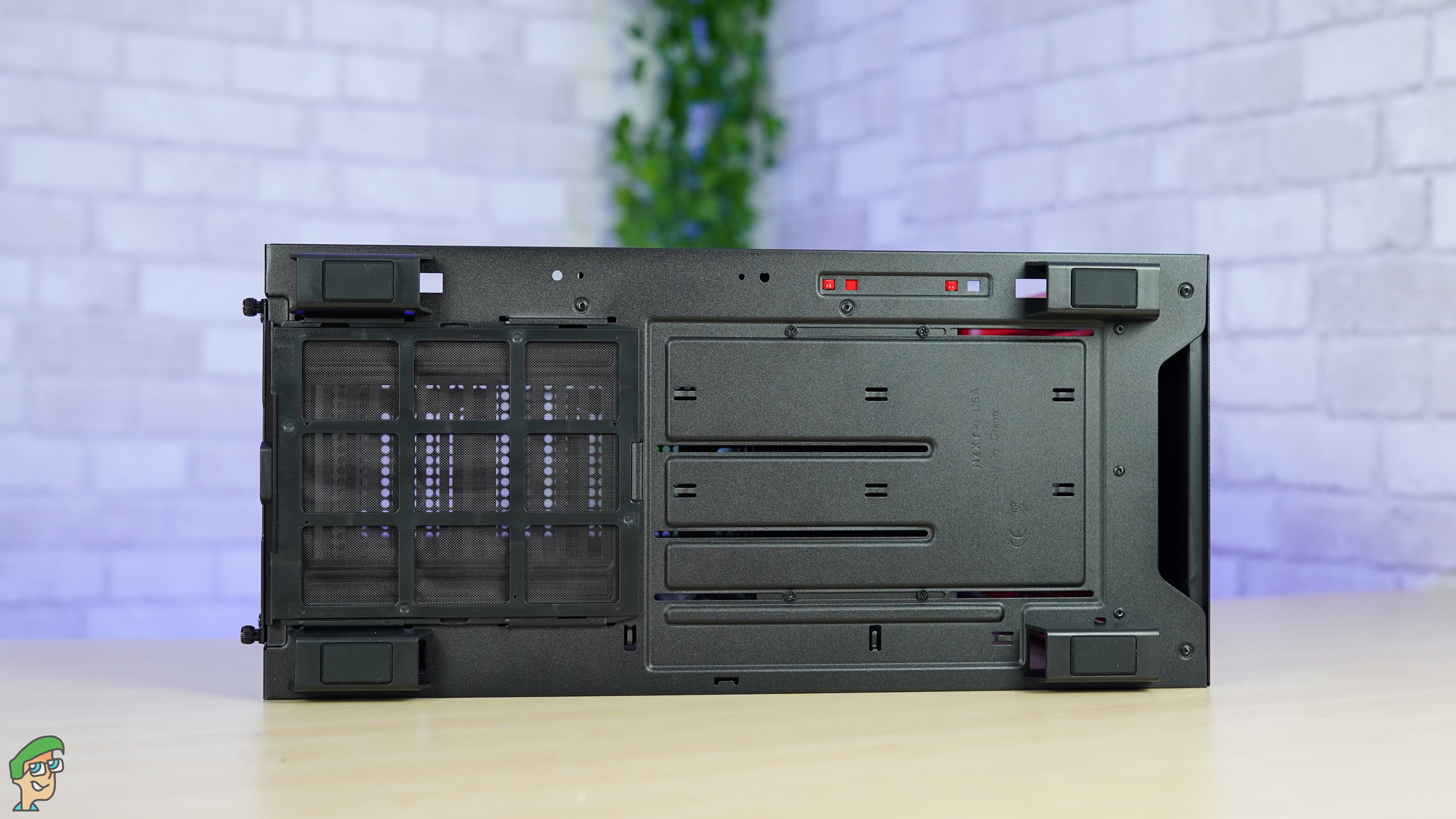
Case Compatibility
NZXT H700i is a mid-tower case and we expect the company to make a similar full-tower case, however, do note that this case can easily support the largest of the mainstream motherboards. It officially supports the EATX standard and that is why you can couple it with the Intel LGA-2066 motherboards or even the AMD TR4 options.
The case supports 360 mm radiators at the front and at the top while a 120 mm radiator can be used at the rear. It can be coupled with 3 x 120 mm fans at the front, 3 x 120 mm fans at the top, and 1 x 120/140 mm fans at the rear. The support for 7 fans is fairly normal in the high-end cases these days and this leads to high airflow as well, although most of the modern cases are not so good at airflow due to tempered glass front, top, and side panels.
As for the clearance is concerned, there is GPU clearance of 413 mm, cooler clearance of 185 mm, front radiator clearance of 60 mm, and top radiator clearance of 30 mm.
Grid+
NZXT Grid+ is one of the most innovative things that come with the case. It is a smart device which is capable of controlling many parameters of the PC such as fan speeds. It can be used in combination with the NZXT CAM software and in fact, uses machine learning for best possible fan curves. This device could really turn into a powerful component but as of now, we believe that the functionality of the device is limited and is full of loopholes. That is why you would be better using manual fan curves for your fans.
Testing Methodology & Specs
For NZXT H700i, we performed two kinds of tests. First, we tested the acoustic performance of the case and then we tested the cooling performance. For acoustic performance, we placed a microphone at 20 cm distance from the side panel of the case, facing upwards. Then we set the fans of the system at 0%, 30%, 50%, 75%, and 100% and noted the respective readings on the microphone. For testing the cooling performance, we used the same fan settings and for all of these settings, we ran AIDA 64 Extreme stability test for stressing the CPU and Furmark with Xtreme Burn-in at 4K resolution. Then we noticed the thermal readings of both the processor and the graphics card. The ambient temperature was around 30 degrees while the ambient noise was around 32 dBA.
- CPU: Intel Coire i9-9900K
- Motherboard: ASUS ROG Strix Z390-E
- Cooler: DEEPCOOL Castle 360 RGB AIO
- RAM: Corsair Vengeance RGB PRO 32GB DDR4 3200MHz C16
- GPU: MSI RTX 2080 Gaming X Trio
- Storage: Samsung 970 EVO Plus 500GB NVMe M.2 SSD
Acoustic Performance
The acoustic performance of the NZXT H700i seems somewhat unexpected. Usually, there is not much difference in the acoustic readings at lower fan speeds but as the fan speeds increase above 50%, the noise increases by a lot. However, we see that the noise increases by only 4 dBA when the fan speed is increased from 50% to 75%, going up to 41 dBA, and only by around 2 dBA when the fan speed is increased to 100%. Conclusively, this does not mean that the case is less noisy, it just means that the case is noisy at medium fan speeds as well, unlike many high-end cases.
Thermal Performance
The thermal performance of this case is better than most cases, thanks to the uncountable vents. The CPU temperatures are really high but the major reason for this is that the Intel Core i9-9900K is not a thermally efficient processor and it was running at 4.7 GHz on all cores. Moreover, AIDA 64 Extreme is one of the most CPU intensive software and it puts a lot of stress on the CPU. Still, the case was not responsible for the high CPU temperatures because the cooler used was DEEPCOOL Castle 360RGB V2, which does not depend a lot on the thermal performance of the case.
As for the GPU temperatures are concerned, the maximum temperatures of 87 degrees seem fine, as per the fixed GPU fan speed of 50%. The Furmark is quite similar to AIDA 64 Extreme and with the Xtreme Burn-In checked, temperatures like this were inevitable. With the higher fan speeds, the temperatures stayed close to 80 degrees; a fine result, considering the 30-degree ambient temperature.
Conclusion
All in all, NZXT H700i is one of the most beautiful cases ever designed, which ticks all those features you would expect from a $200 case. It provides beautiful RGB lighting, beautifully designed exterior, spacious interior, lots of drive bays, and unmatched compatibility with the motherboards. Not only the aesthetics, but the case also excels greatly at cooling performance as well, making it similar to some of the best mesh-front cases.
NZXT H700i
Enthusiast's Choice
Pros
- Great cooling performance despite not having front mesh
- Provides very modern looks
- Available in four colours
- Impressive cable management
Cons
- The machine-learning feature of the Grid+ is limited
- The acoustic performance is not the best
Form Factor: Mid-tower/ATX | Fan mounts: 7 | Storage Drive Bays: 10 | Expansion Slots: 7 | Side Panel: Tempered Glass | I/O Ports: 2 x USB 2.0, 2 x USB 3.1 Gen 1, 1 x Audio/Mic | Weight: 12.27 kg | Dimensions: 230 mm x 516 mm x 494 mm (W x H x D ) (with feet)

VERDICT:A great blend of performance and aesthetics while not breaking the bank; NZXT H700i is among the champions of the PC cases, providing innovation, looks, and top of the line cooling performance
Price at the time of the review: US $196.69 / UK £149.99

 Check Price
Check Price




